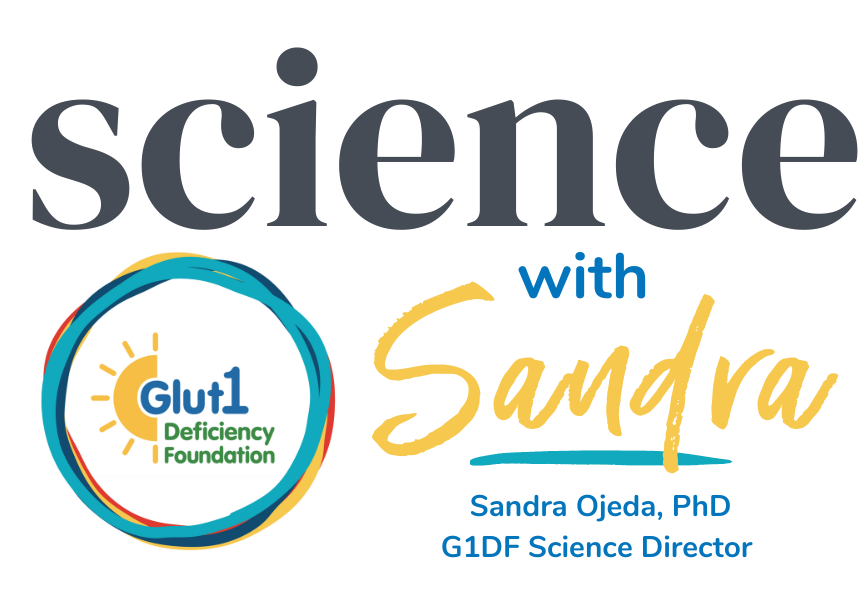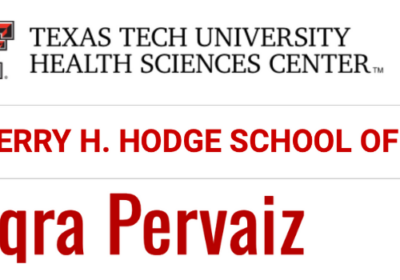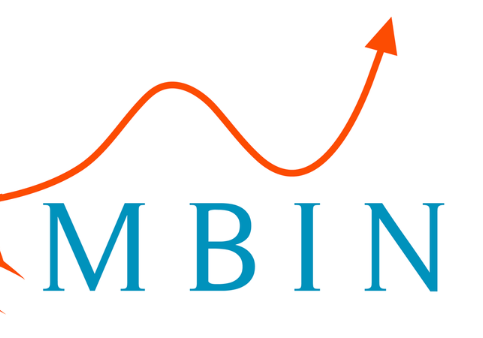Winter ’24 Research Roundtable: GSDs and CDGs
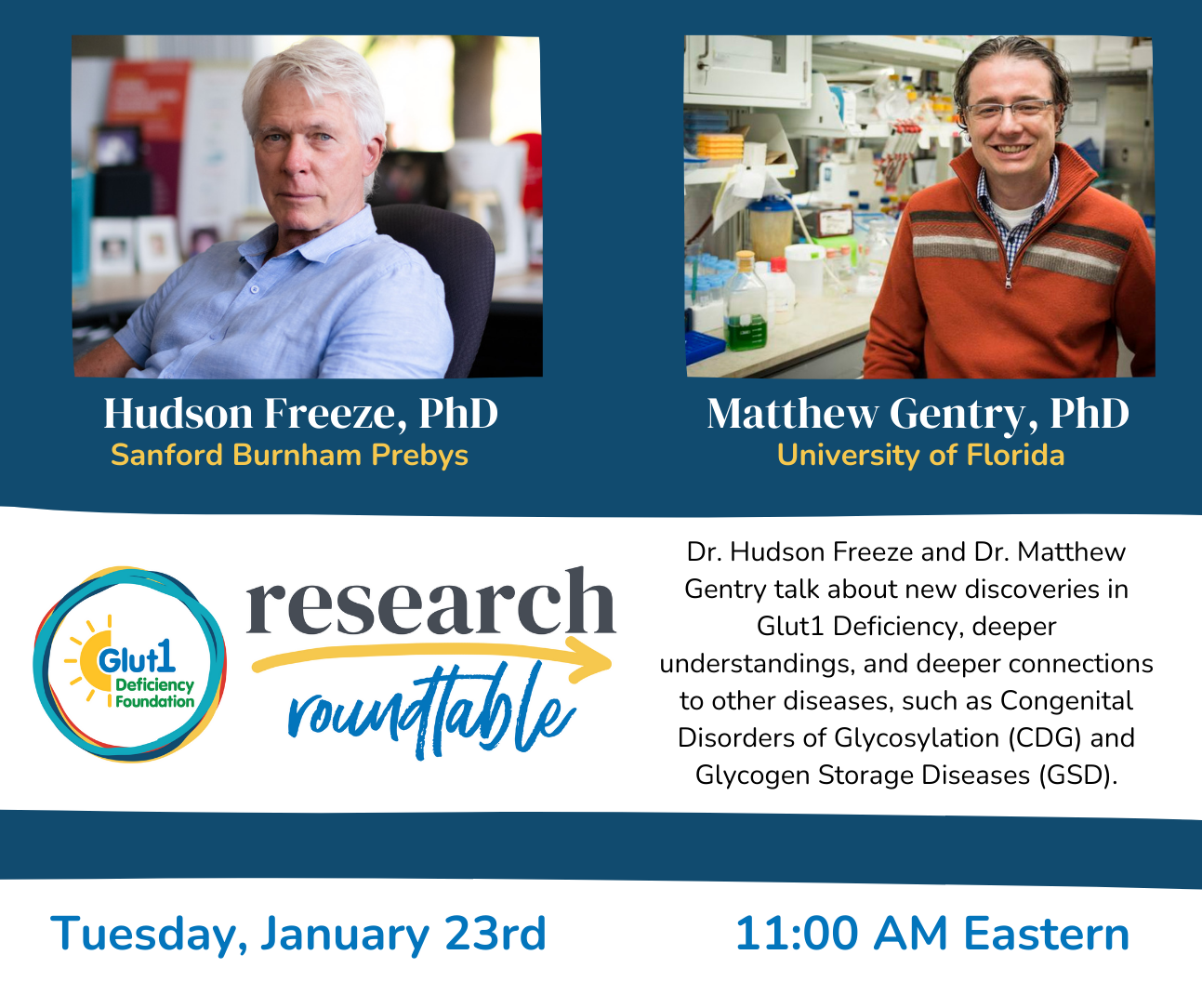
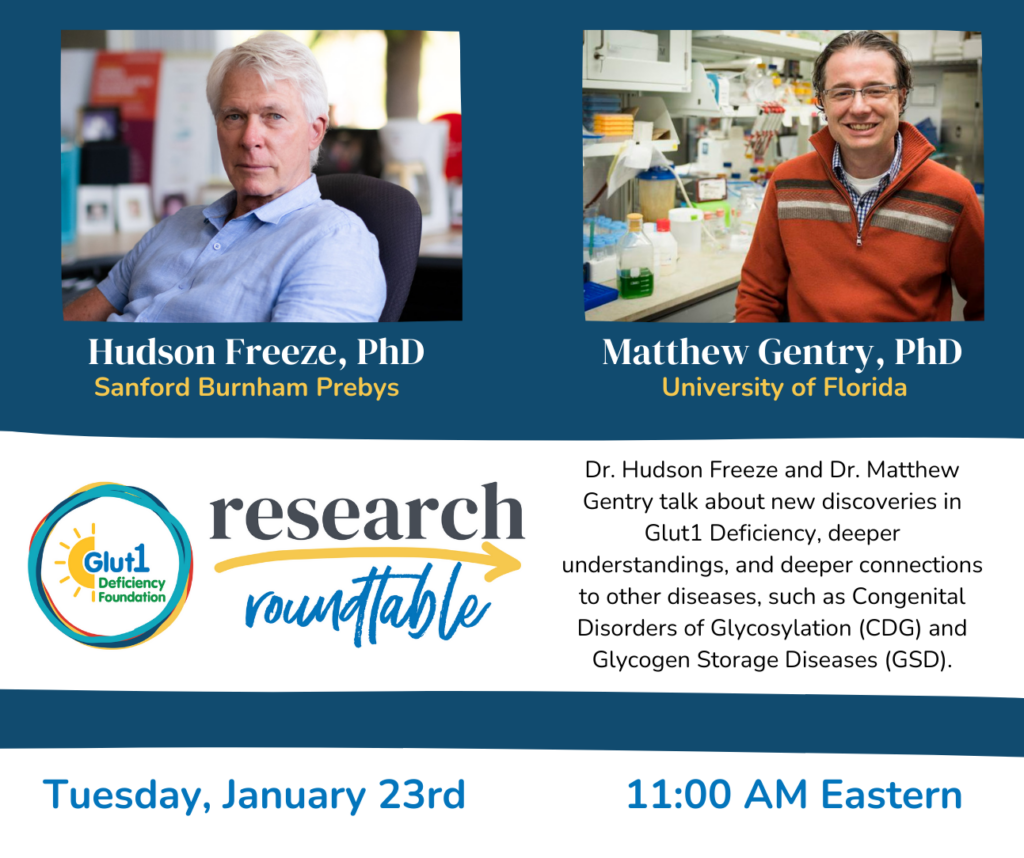
Hello everyone and welcome to Science with Sandra!
For this edition of Science with Sandra I wanted to highlight the Winter gathering of our Research Roundtable. It took place on Tuesday, January 23rd with the participation of two wonderful guest speakers: Dr. Matthew Gentry and Dr. Hudson Freeze.
The Research Roundtable was an excellent opportunity to hear from two accomplished researchers who are fairly new to our community, but who have helped us grow our research network in additional directions and are doing a fabulous job of contributing their expertise to our efforts. We had 36 participants from different backgrounds and from different regions in the country and around the world.
Our first speaker was Dr. Matthew Gentry. Dr. Gentry is a professor and chair of Biochemistry and Molecular Biology in the College of Medicine at the University of Florida. Dr. Gentry has over 20 years of experience working on glycogen storage diseases. As a postdoc he worked at UC-San Diego on glycogen storage diseases and a childhood dementia called Lafora disease. His lab works on a number of CNS-centric glycogen storage diseases and the role of glycogen in cancer, focusing on defining disease mechanisms, pre-clinical drugs and clinical biomarkers. In addition, Dr. Gentry is our Science Advisor and part of our Medical and Scientific Advisory team.
Dr. Gentry talked about “Metabolic channeling of signaling monosaccharides in the brain”. He explained that glycogen is a biomolecule comprised of glucose that is stored in the body, mostly in the liver, however, it is also stored in muscles and the brain.
Until recently, the function of glycogen in the brain was not widely understood; however, more recently there have been more studies focused on this topic. Some of the areas in the brain in which glycogen is involved in energy homeostasis, learning and aging. Studies have elucidated that when some of the enzymes involved in glycogen metabolism are not functioning properly, this can result in diseases such as Lafora Disease.
Dr. Gentry also explained how sugars, like glucose, are necessary for energy, and in addition, they are also required for N-linked glycosylation. N-linked glycosylation is a process by which proteins are decorated with sugars allowing these proteins to go to the right place and perform their functions in metabolism or signaling in an appropriate manner.
Dr. Gentry and his collaborator Dr. Ramon Sun utilize MALDI imaging, a powerful mass spectrometry tool that allows mapping the distribution of molecules from a thin tissue sample, to study glycogen metabolism in the brain. Dr. Gentry and his team have used this technique to study the levels of glycogen and N-liked glycans in the brain of Glut1 Deficient mice. The results showed that Glut1 Deficient mice have low levels of glycogen as well as low levels of N-linked glycans. In his future research, Dr. Gentry plans to look at glycoproteomics of Glut1 Deficient mice.
Our second guest speaker was Dr. Hudson Freeze. Dr. Freeze is a Professor of glycobiology and Director of the Sanford Children’s Health Research Center and the Human Genetic Program at the Sanford Burnham Prebys Medical Discovery Institute in La Jolla, California and is an adjunct professor at UC-San Diego. Dr. Freeze’s research focuses on the pathology resulting from faulty glycosylation. His research is driven by the search for novel therapeutics to treat patients with mutations leading to glycosylation defects called Congenital Disorders of Glycosylation.
Dr. Freeze’s talked about “GLUT1 transporter is also a fucose transporter”. Fucose is a monosaccharide important for glycosylation, mostly N-linked glycosylation. He explained that fucose can be formed de novo (anew) in cells, but it can also enter cells from outside (exogenous).
He shared the experiments he and his team performed to establish that GLUT1 is also a fucose transporter. For the experiments, he used a cell line that lacks the de novo pathway to produce fucose, in that way he could only find fucose in the cell if fucose was being transported into the cell by a transporter. The results showed that from a wide array of transporters present in the cell, GLUT1 transports fucose. This finding brought a new question, does GLUT1 Deficiency have something in common with Fucose deficiency? Will treating GLUT1 Deficient with fucose help ameliorate some of the symptoms experienced by patients?
First, he decided to perform a fucose uptake assay in cells that were treated with GLUT1 inhibitors. The results indicated that when inhibiting GLUT1 transporter, fucose uptake was significantly reduced.
Next, he conducted a pilot experiment. He used Glut1 deficient mice as well as wild type (WT) mice and fed them a low dose of fucose during 10 days. The results obtained showed that Glut1 deficient mice treated with fucose increased the levels of glycogen in brain at similar levels to WT mice. Furthermore, the level of glycosylation also increased. Both of these were evaluated using the MALDI technique thanks to a collaboration with Dr. Matthew Gentry and Dr. Ramon Sun at the University of Florida and in partnership with Dr. Juan Pascual. In addition, studies performed by Dr. Pascual and his team showed that Glut1 deficient mice treated with fucose improve their gate, and their strides are much shorter compared to untreated mice only 5 days after starting treatment.
Future studies are to test fucose in patient derived induced pluripotent stem cells (iPSCs) and to look at brain development in GLUT1 Deficiency. This project will be done in collaboration with Dr. Caroline Pearson.
We thank Dr. Gentry, Dr. Freeze, Dr. Pascual, and Dr. Pearson for all the wonderful work they are doing, for taking an interest in our community to have a better understanding of the disease and to find better ways to treat GLUT1 Deficiency.
Thank you for reading our post and please do not hesitate to contact me if you have any questions at [email protected].

